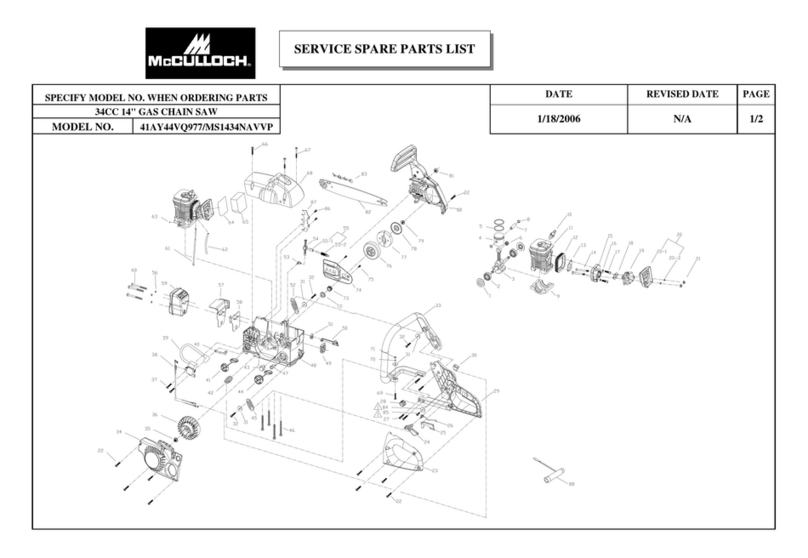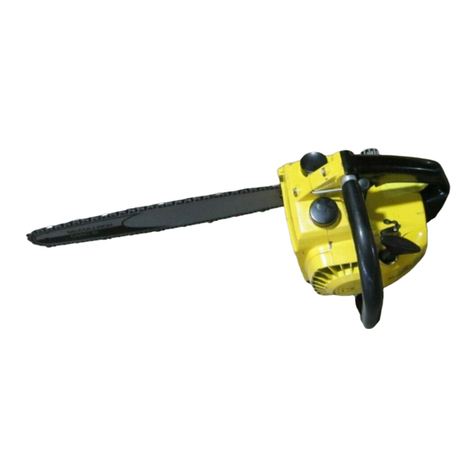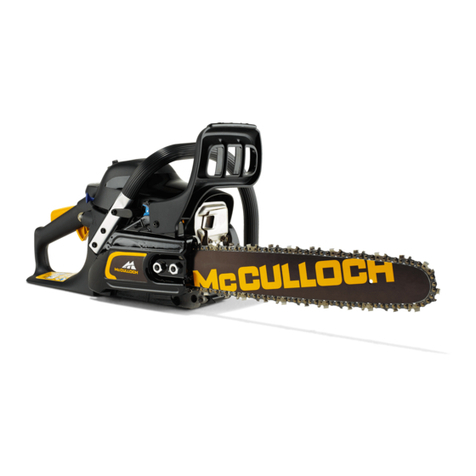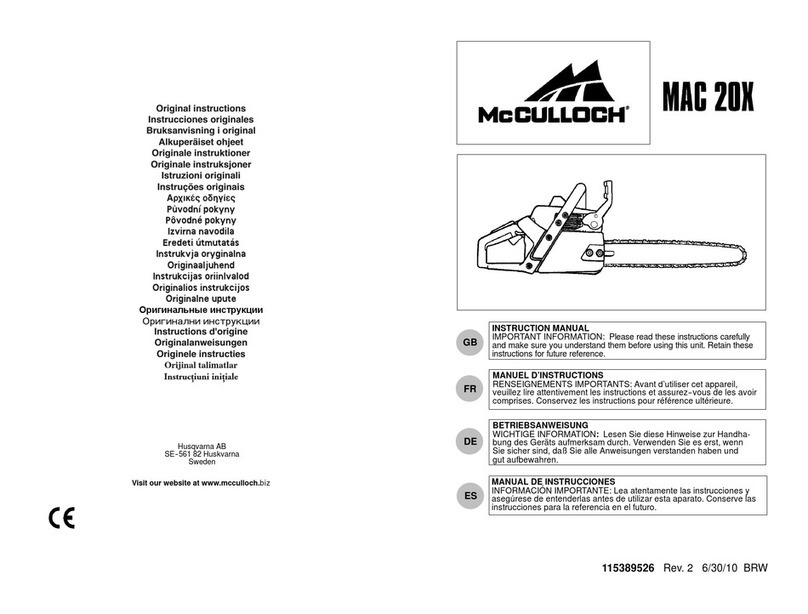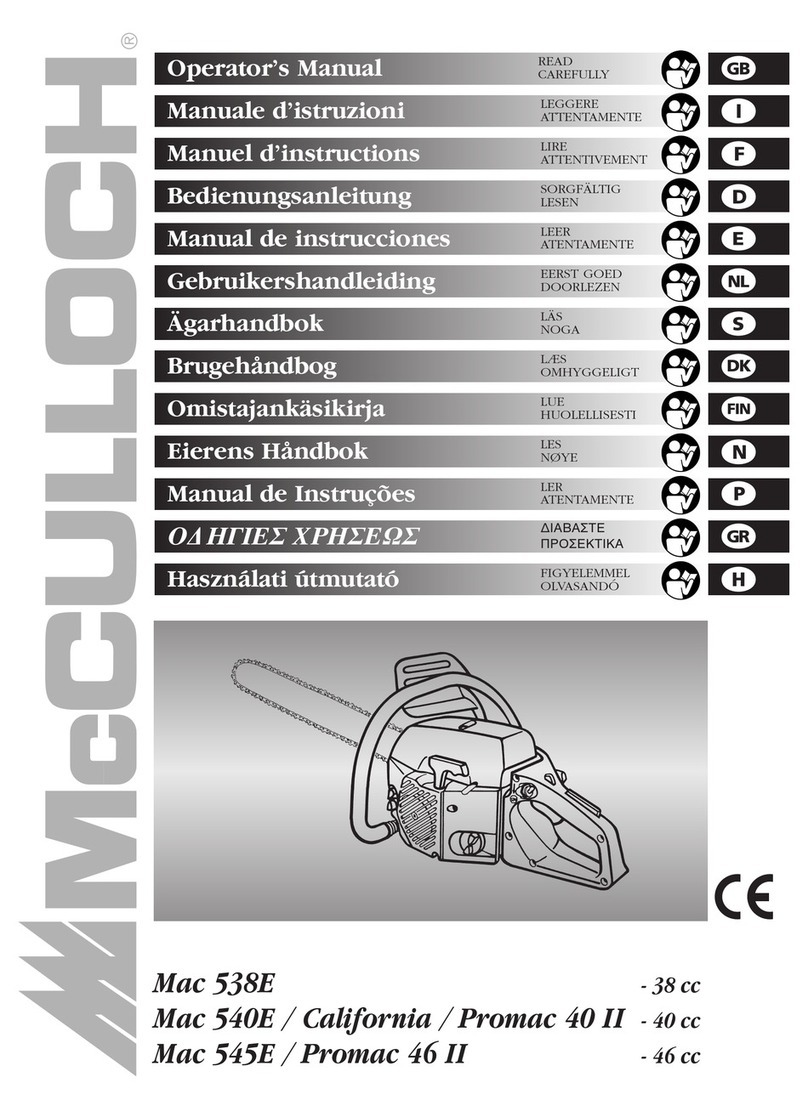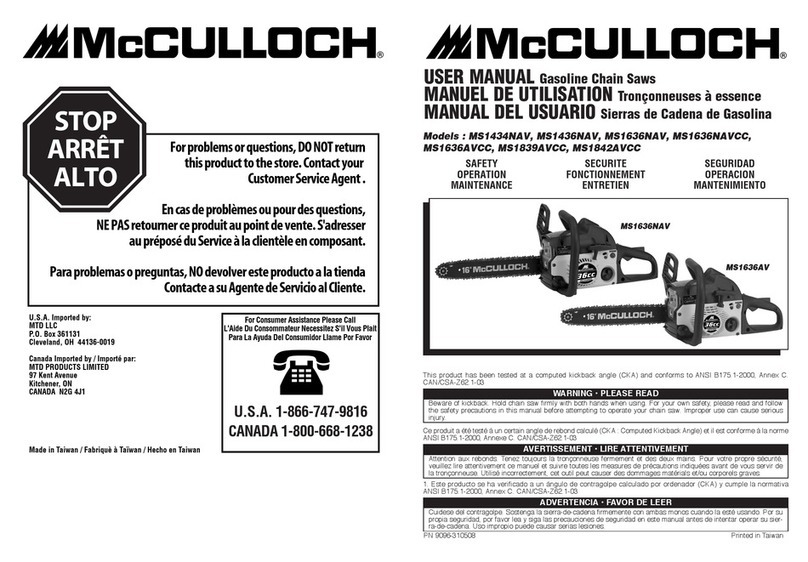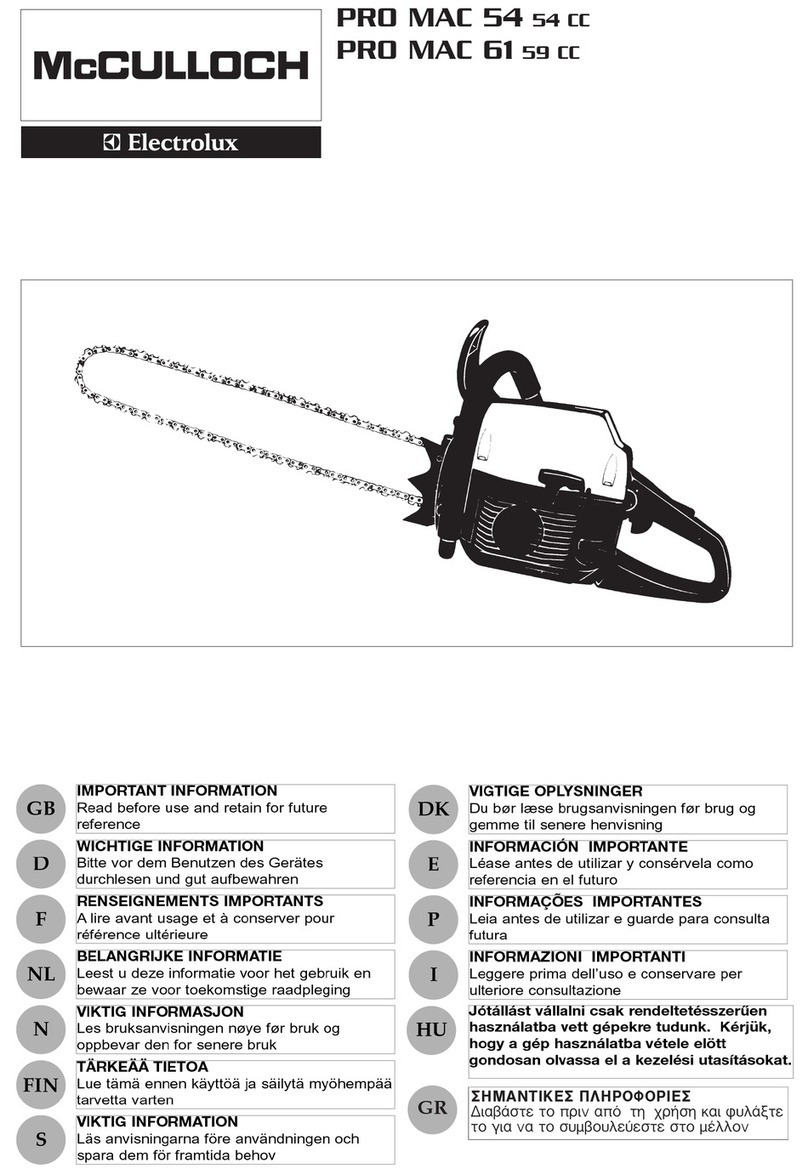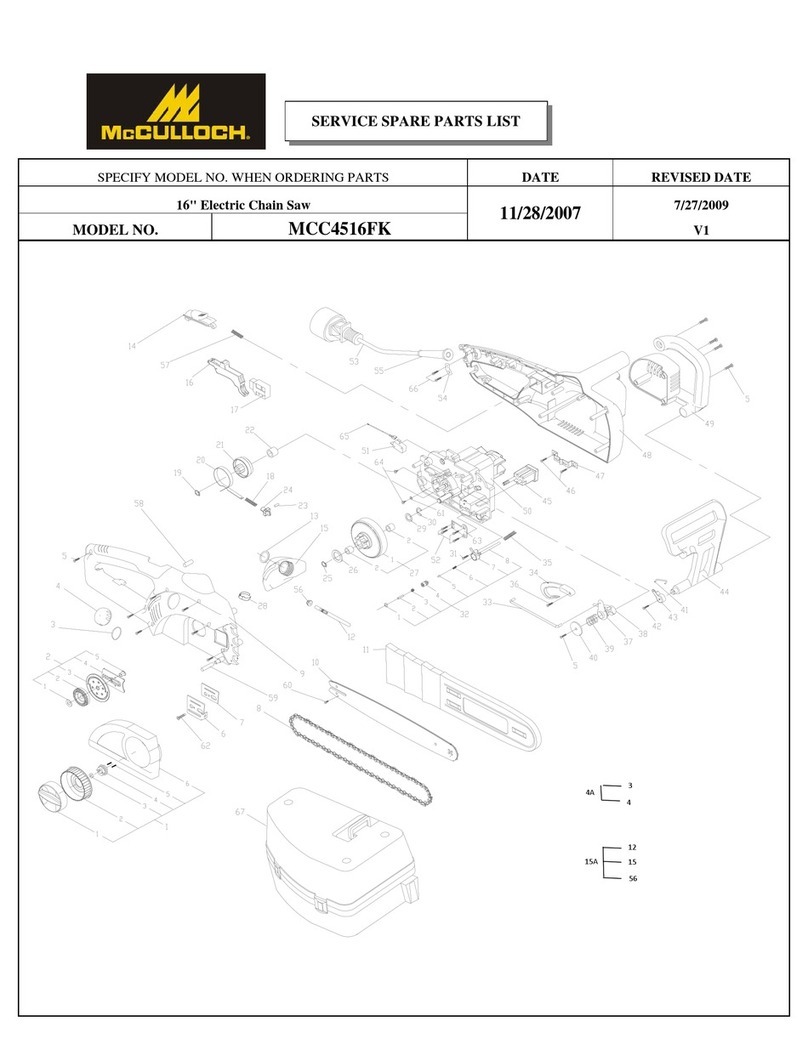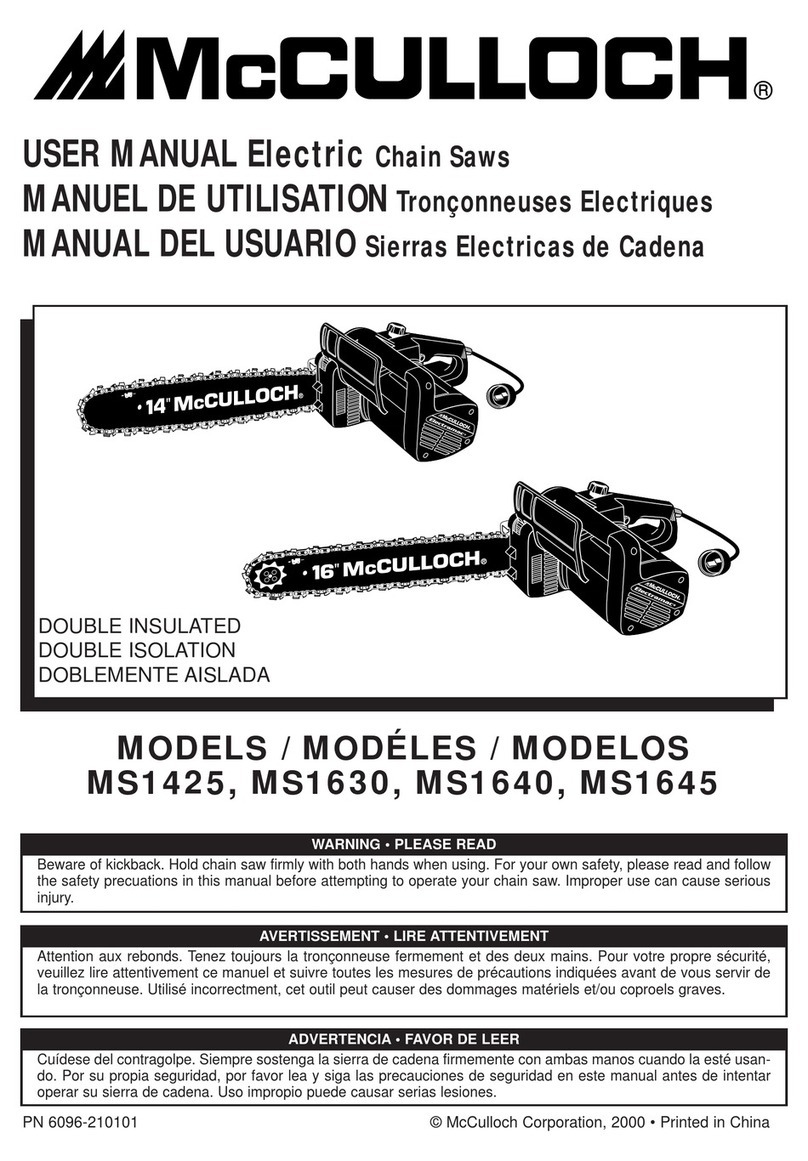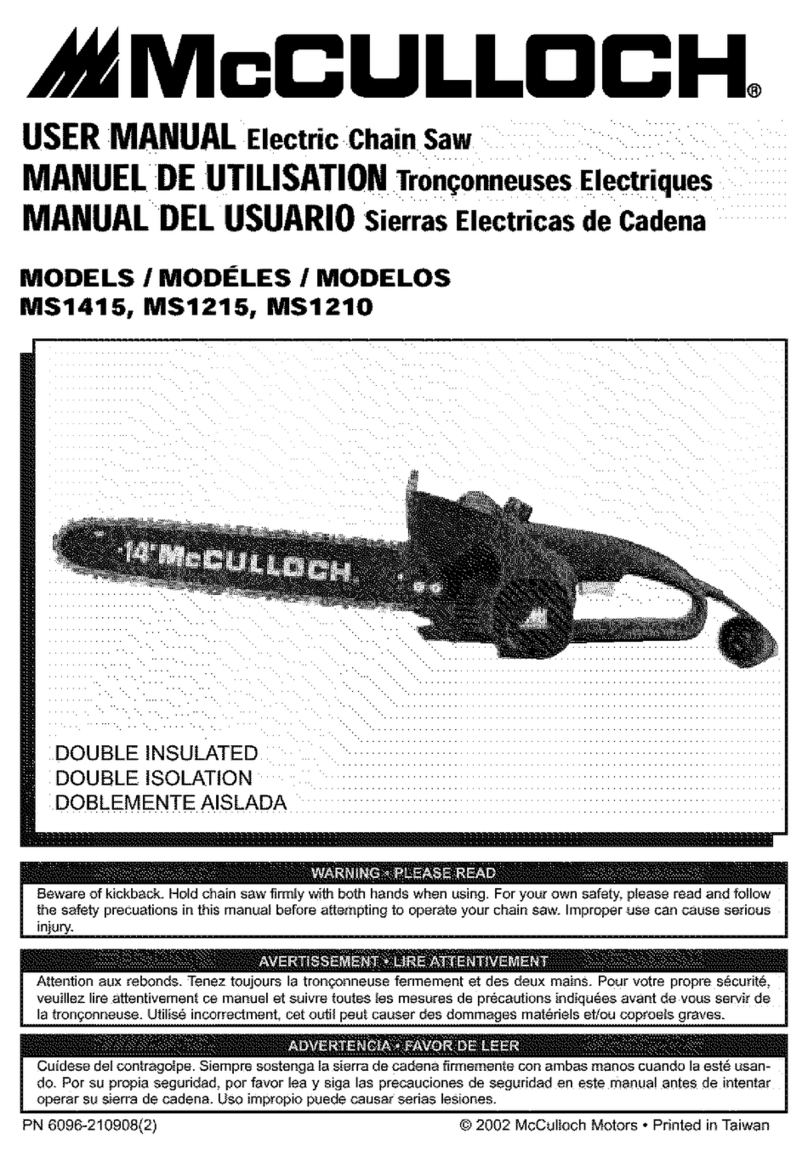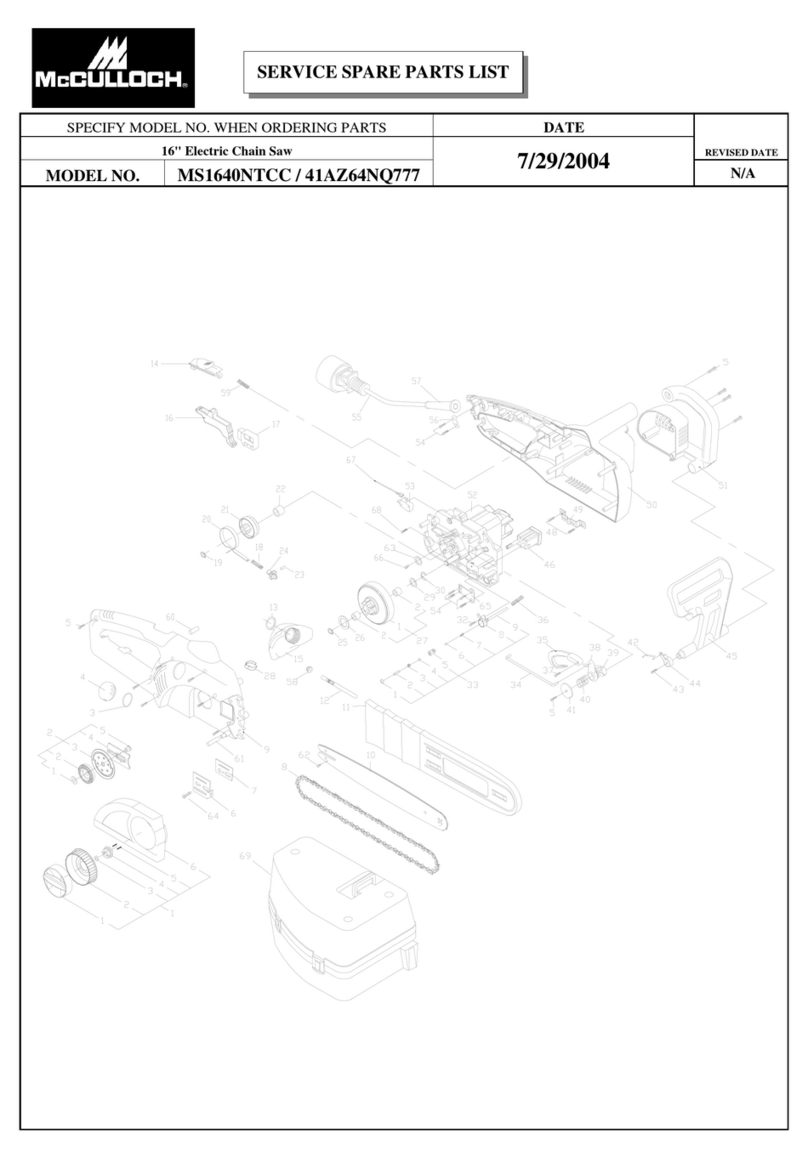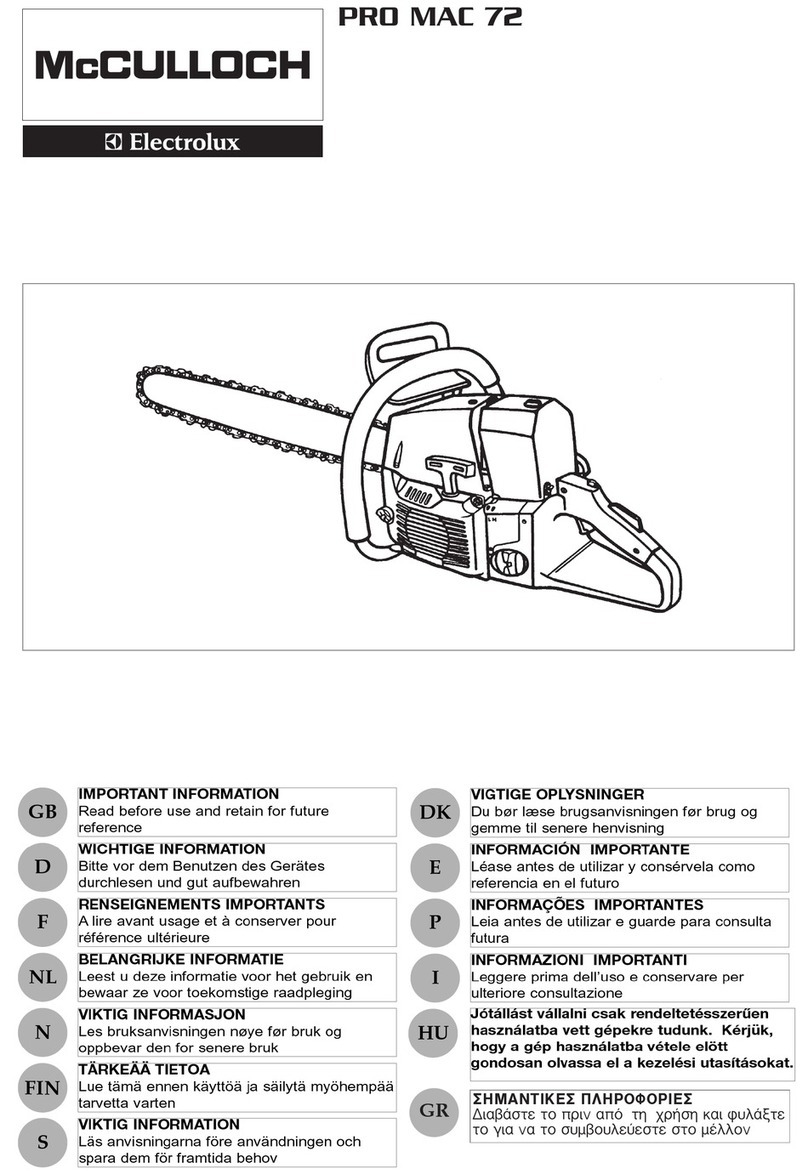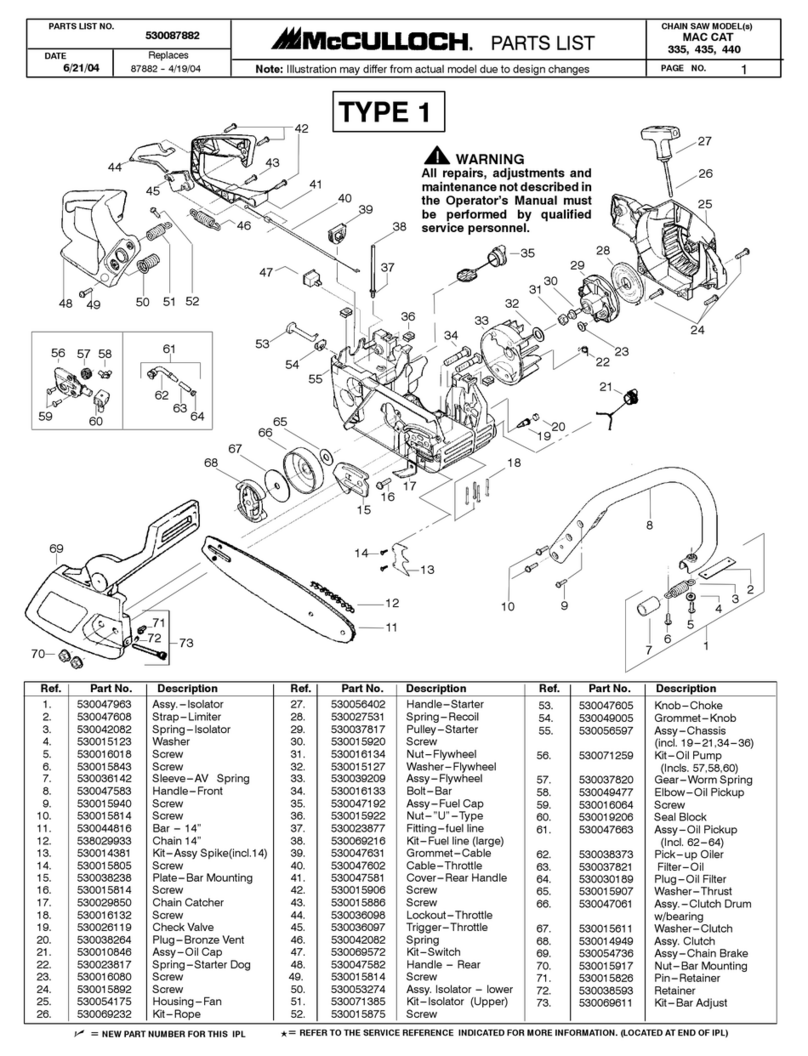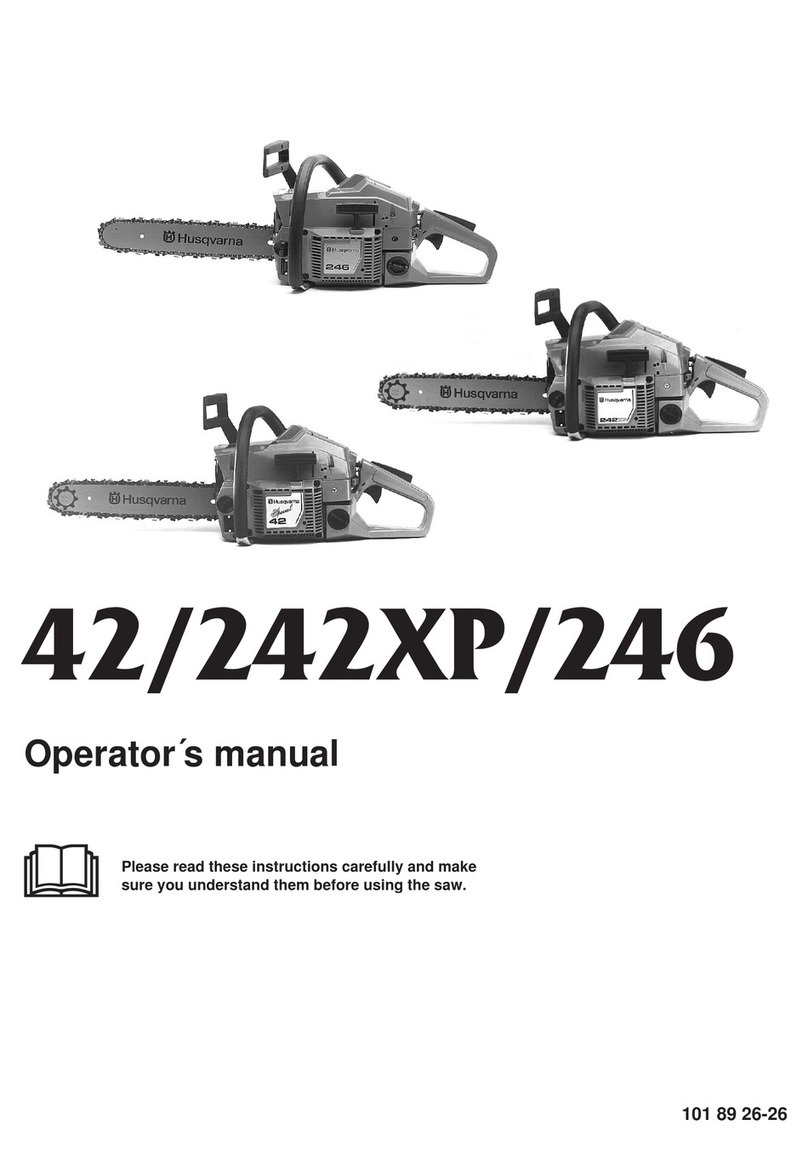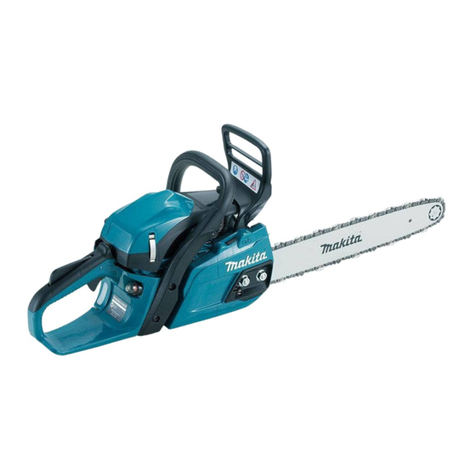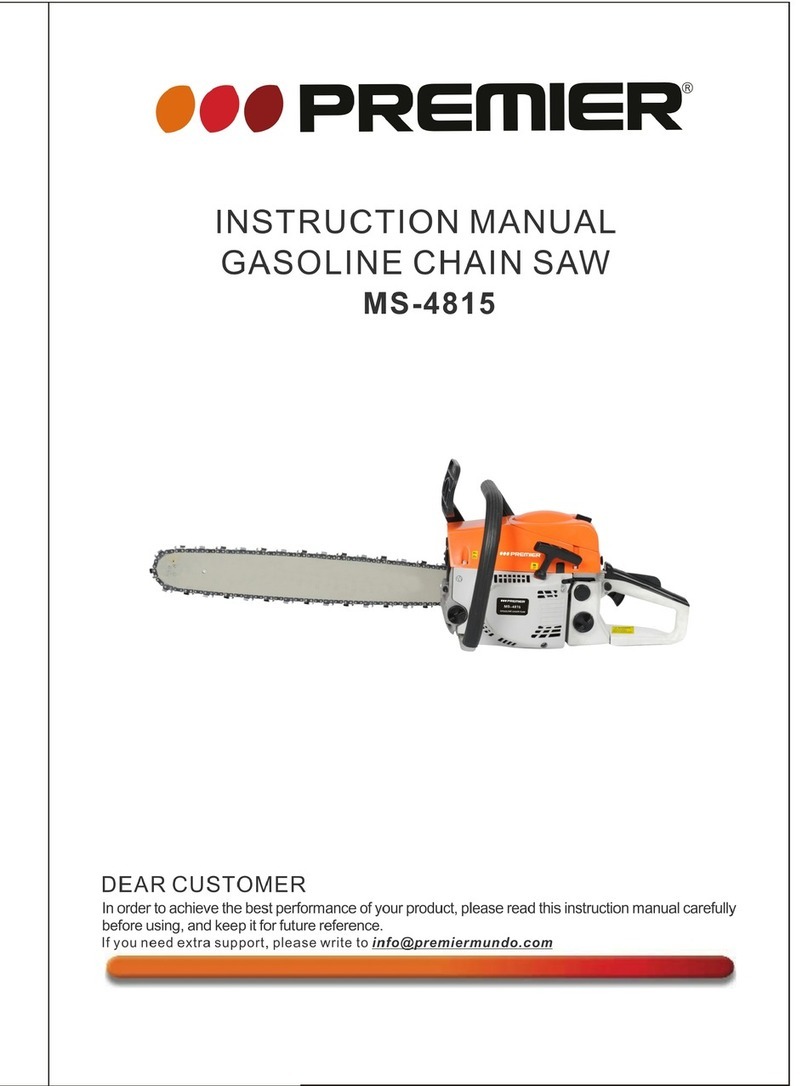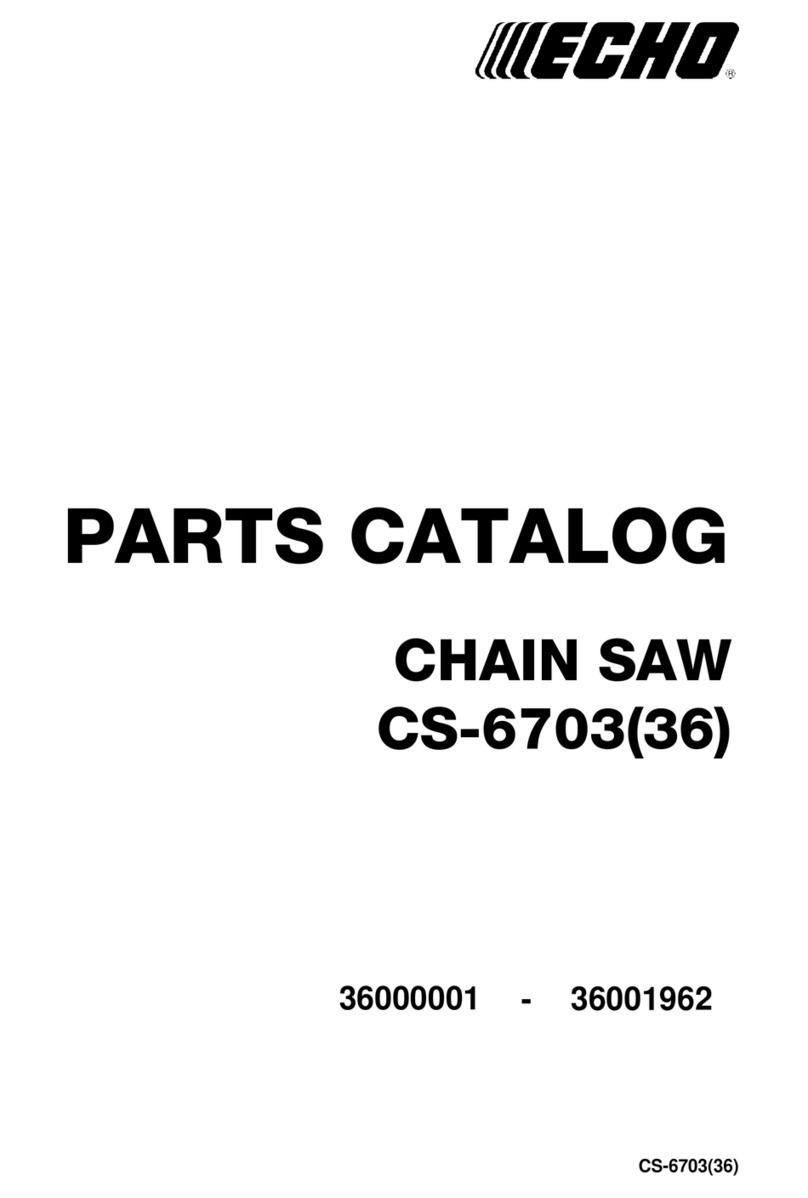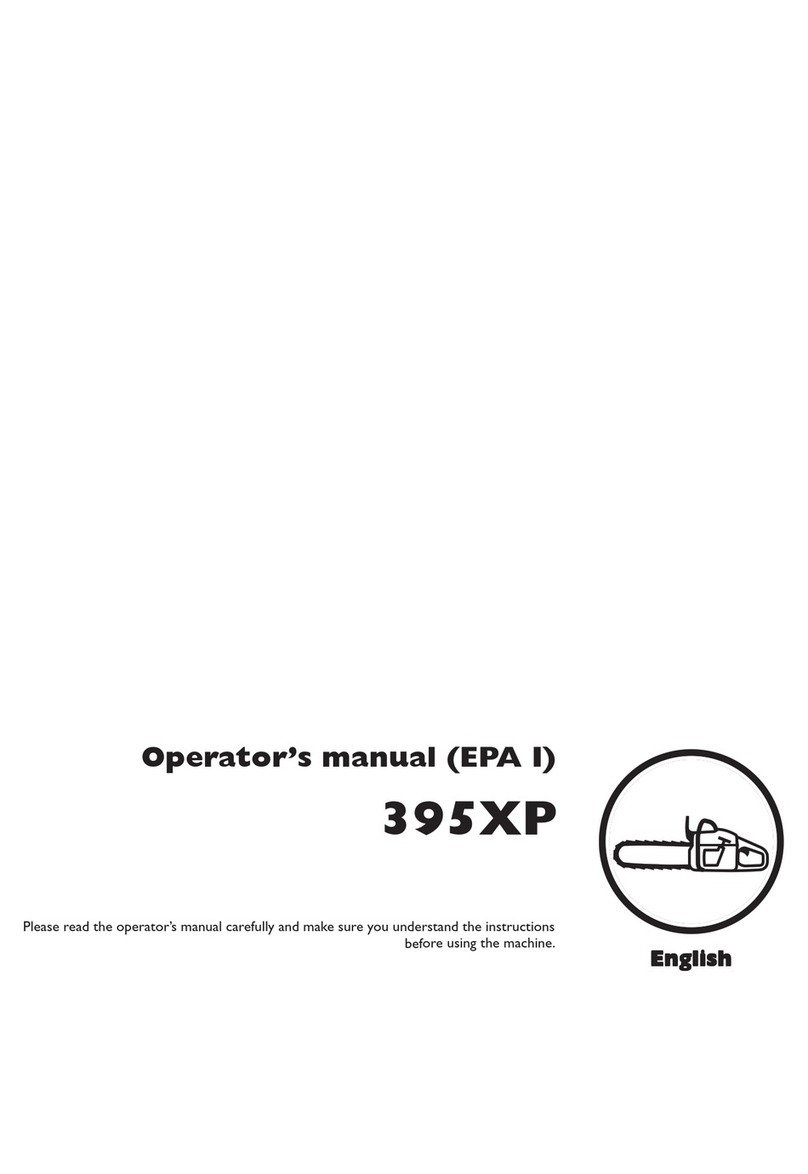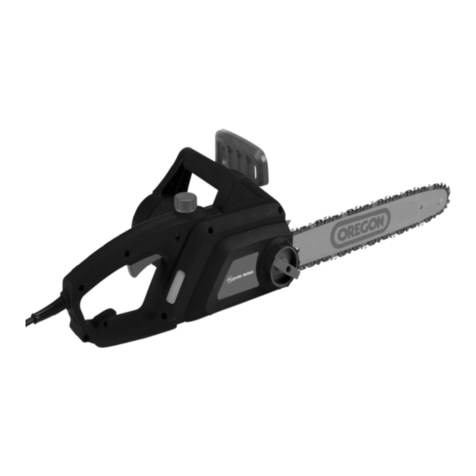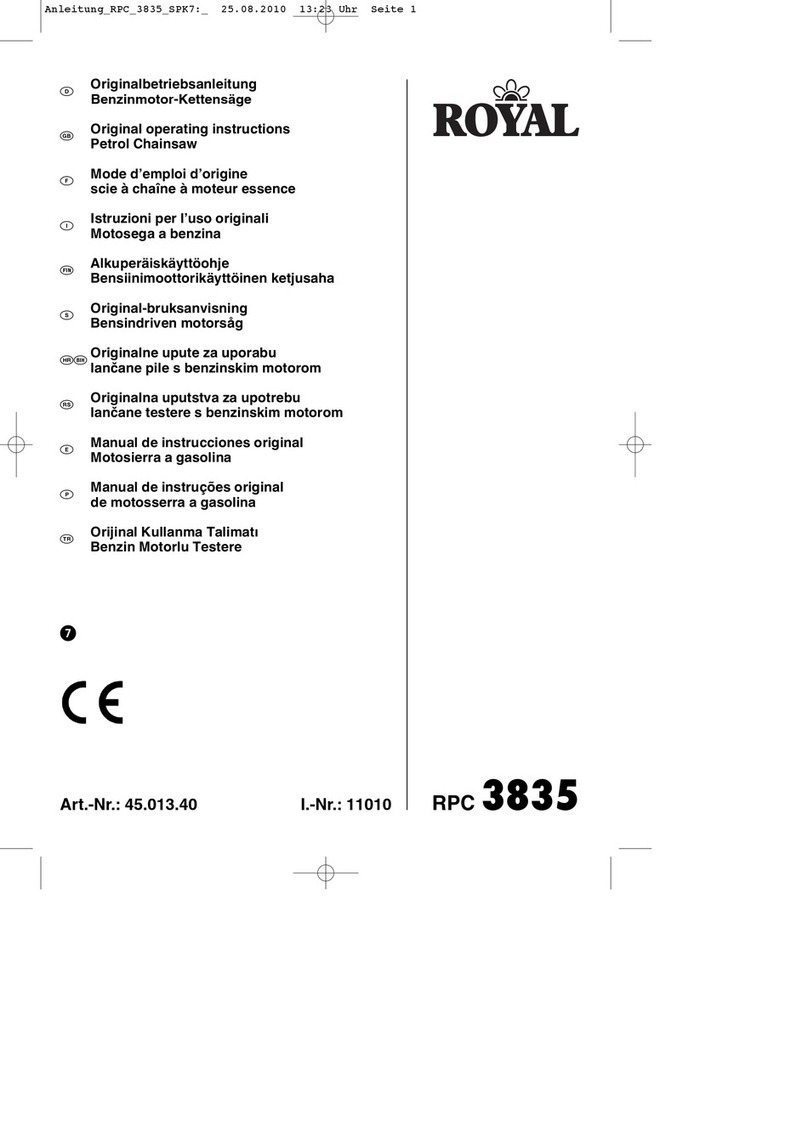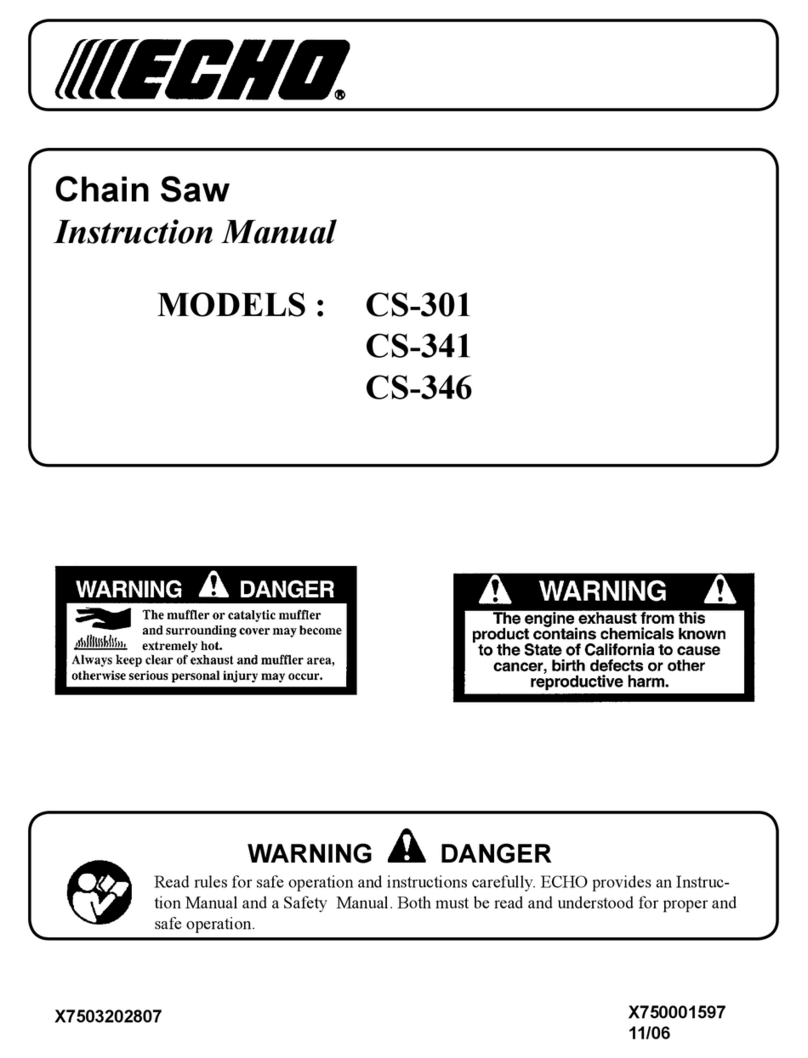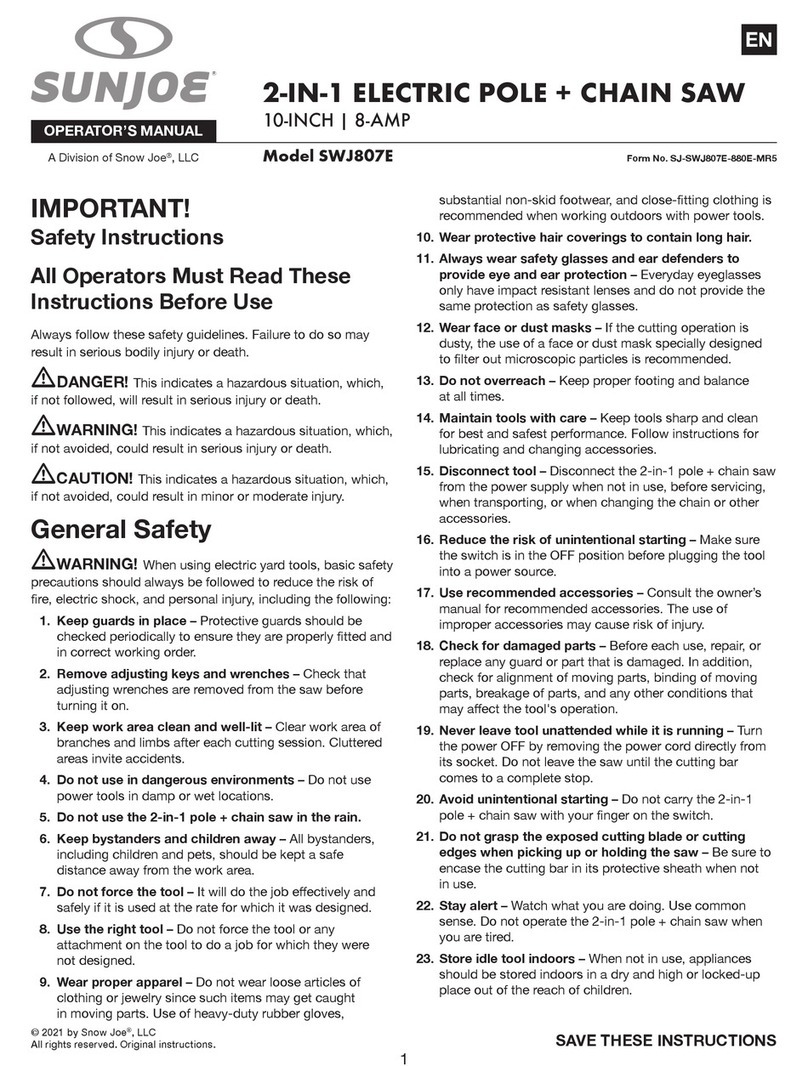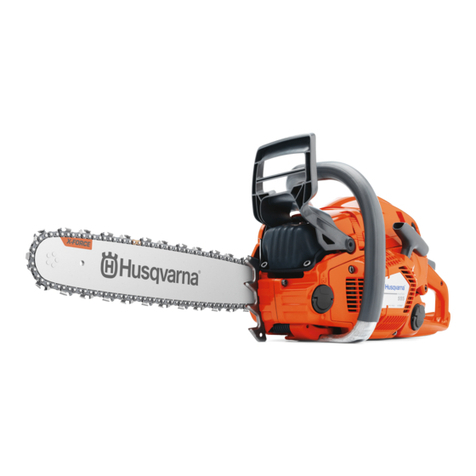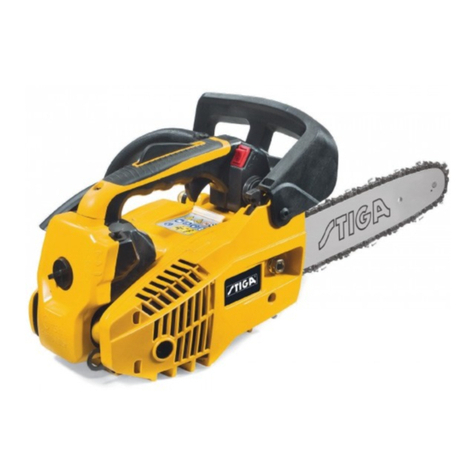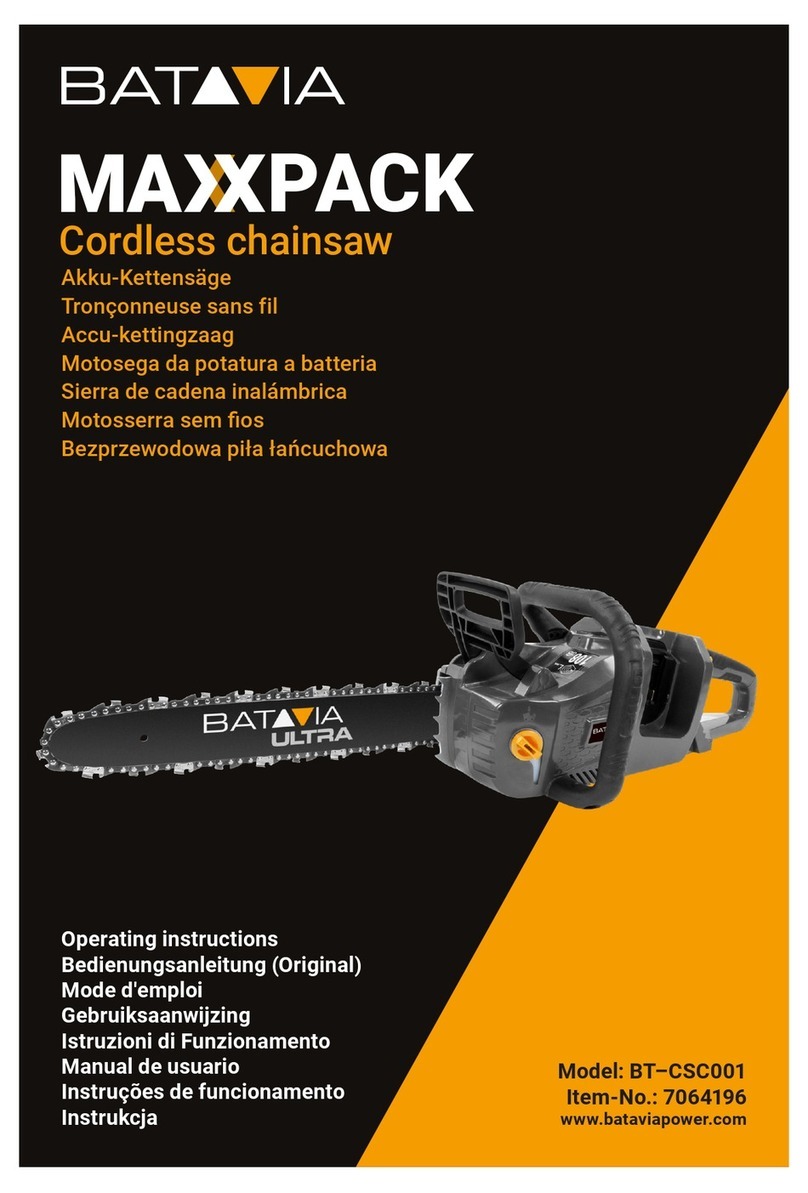
MAINTAINING YOUR SAW
+DYHDOOFKDLQVDZVHUYLFHSHUIRUPHGE\DTXDOL¿HG
service dealer with the exception of the items
listed in the maintenance section of this manual.
For example, if improper tools are used to remove
RUKROGWKHÀ\ZKHHOZKHQVHUYLFLQJWKHFOXWFK
VWUXFWXUDOGDPDJHWRWKHÀ\ZKHHOFDQRFFXUDQG
FDXVHWKHÀ\ZKHHOWREXUVW
Make certain the saw chain stops moving when the
throttle trigger is released. For correction, refer to
Carburettor Adjustment.
Never modify your saw in any way.
Keep the handles dry, clean, and free of oil or fuel
mixture.
Keep fuel and oil caps, screws, and fasteners
securely tightened.
Use only genuine accessories and replacement
parts as recommended.
Certain regions require by law that many internal
combustion engines are to be equipped with a spark
arresting screen. If you operate a chainsaw in a
locale where such regulations exist, you are legally
responsible for maintaining the operating condition
of these parts. Failure to do so is a violation of
the law. Refer to the MAINTENANCE section for
maintenance of the spark arresting screen.
HANDLING FUEL
Do not smoke while handling fuel or while operating
the saw.
(OLPLQDWHDOOVRXUFHVRIVSDUNVRUÀDPHLQWKHDUHDV
where fuel is mixed or poured. There should be no
VPRNLQJRSHQÀDPHVRUZRUNWKDWFRXOGFDXVH
sparks. Allow engine to cool before refueling.
$OZD\VKDYH¿UHH[WLQJXLVKLQJWRROVDYDLODEOHLI\RX
should need them.
Mix and pour fuel in an outdoor area on bare ground;
store fuel in a cool, dry, well ventilated place; and
use an approved, marked container for all fuel
purposes. Wipe up all fuel spills before starting saw.
0RYHDWOHDVWPHWHUVIHHWIURPIXHOLQJVLWH
before starting engine.
Turn the engine off and let saw cool in a non-
combustible area, not on dry leaves, straw, paper,
etc. Slowly remove fuel cap and refuel unit.
Store the unit and fuel in an area where fuel vapors
FDQQRWUHDFKVSDUNVRURSHQÀDPHVIURPZDWHU
heaters, electric motors or switches, furnaces, etc.
UNDERSTANDING KICKBACK
aWARNING! Avoid kickback which can result
in serious injury. Kickback is the backward,
upward or sudden forward motion of the
guide bar occurring when the saw chain near
the upper tip of the guide bar contacts any
object such as a log or branch, or when the
wood closes in and pinches the saw chain
in the cut. Contacting a foreign object in the
wood can also result in loss of chainsaw
control.
ROTATIONAL KICKBACK
Rotational kickback can occur when the moving chain
contacts an object at the upper tip of the guide bar.
This contact can cause the chain to dig into the object,
which stops the chain for an instant. The result is a
lightning fast, reverse reaction which kicks the guide
bar up and back toward the operator.
PINCH KICKBACK
Pinch kickback can occur when the wood closes in
and pinches the moving saw chain in the cut along
the top of the guide bar and the saw chain is suddenly
stopped. This sudden stopping of the chain results
in a reversal of the chain force used to cut wood and
causes the saw to move in the opposite direction of
the chain rotation. The saw is driven straight back
toward the operator.
PULL-IN
Pull-in can occur when the moving chain contacts a
foreign object in the wood in the cut along the bottom
of the guide bar and the saw chain is suddenly
stopped. This sudden stopping pulls the saw forward
and away from the operator and could easily cause
the operator to lose control of the saw.
REDUCING THE CHANCE OF
KICKBACK
Recognize that kickback can happen. With a basic
understanding of kickback, you can reduce the
element of surprise which contributes to accidents.
Never let the moving chain contact any object at the
tip of the guide bar.
Keep the working area free from obstructions such
as other trees, branches, rocks, fences, stumps,
etc. Eliminate or avoid any obstruction that your saw
chain could hit while you are cutting. When cutting
a branch, do not let the guide bar contact branch or
other objects around it.
Keep your saw chain sharp and properly tensioned.
A loose or dull chain can increase the chance of
kickback occurring. Follow manufacturer’s chain
sharpening and maintenance instructions. Check
tension at regular intervals with the engine stopped,
never with the engine running. Make sure the bar
nuts are securely tightened after tensioning the
chain.
Begin and continue cutting at full speed. If the chain
is moving at a slower speed, there is greater chance
of kickback occurring.
Use wedges made of plastic or wood. Never use
metal to hold the cut open.
Cut one log at a time.
Use extreme caution when re-entering a previous
cut.
Do not attempt cuts starting with the tip of the bar
SOXQJHFXWV
Watch for shifting logs or other forces that could
close a cut and pinch or fall into chain.
Do not twist the saw as the bar is withdrawn from an
undercut when bucking.
Use the reduced-kickback guide bar and low-
NLFNEDFNFKDLQVSHFL¿HGIRU\RXUVDZ
MAINTAINING CONTROL
.HHSDJRRG¿UPJULSRQWKHVDZZLWKERWKKDQGV
ZKHQWKHHQJLQHLVUXQQLQJDQGGRQ¶WOHWJR$¿UP
grip will help you reduce kickback and maintain
FRQWURORIWKHVDZ.HHSWKH¿QJHUVRI\RXUOHIW
hand encircling and your left thumb under the front
handlebar. Keep your right hand completely around
the rear handle whether you are right handed or left
handed. Keep your left arm straight with the elbow
locked.
Position your left hand on the front handlebar so it
is in a straight line with your right hand on the rear
handle when making bucking cuts. Never reverse
right and left hand positions for any type of cutting.
Stand with your weight evenly balanced on both feet.
5
